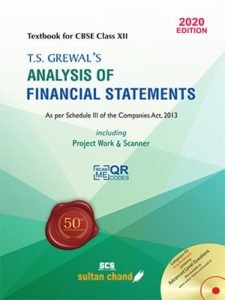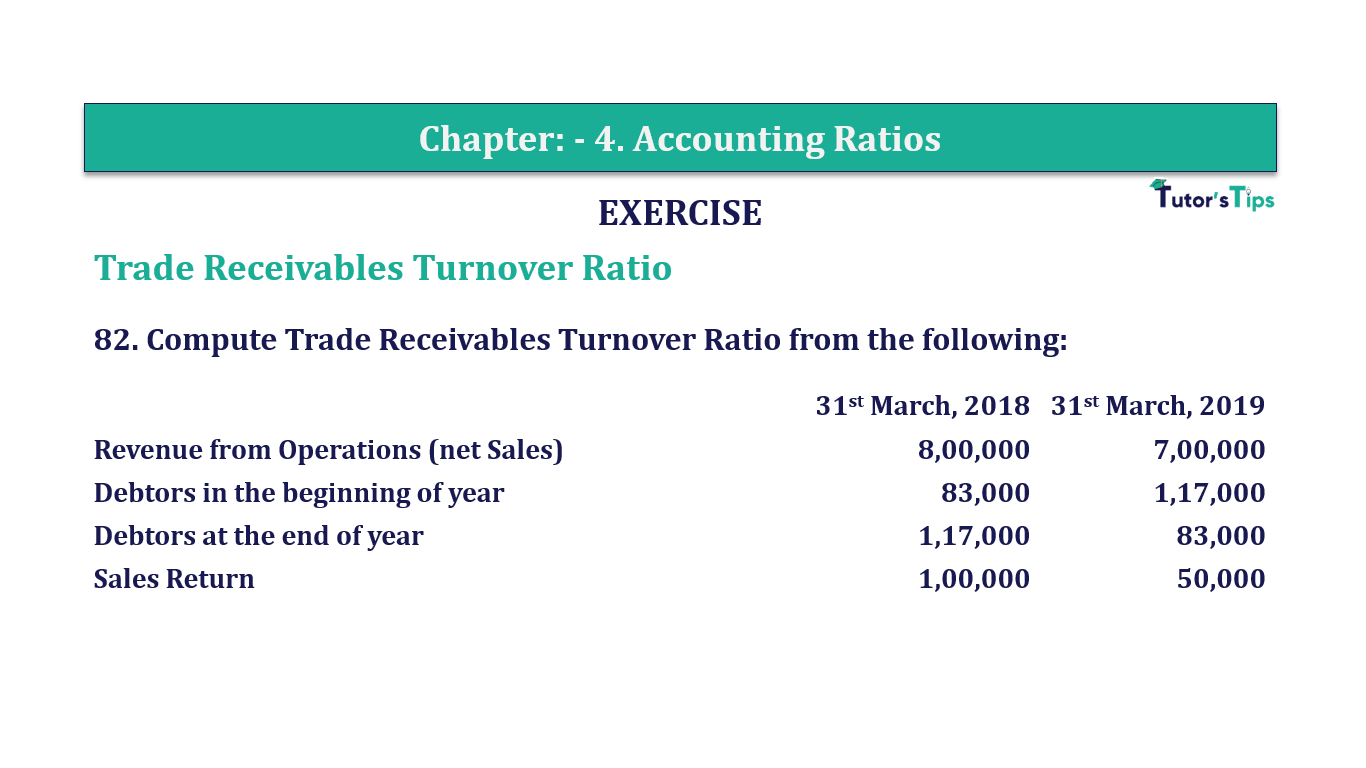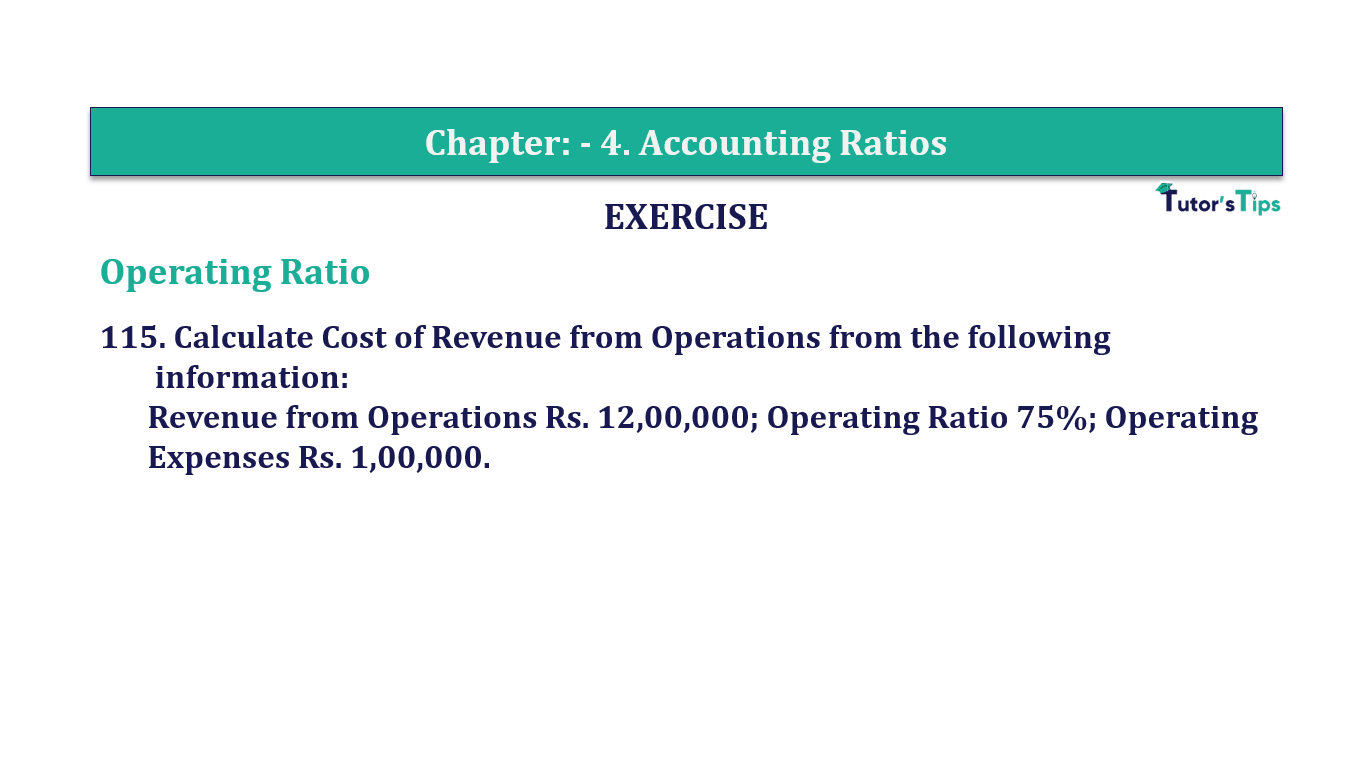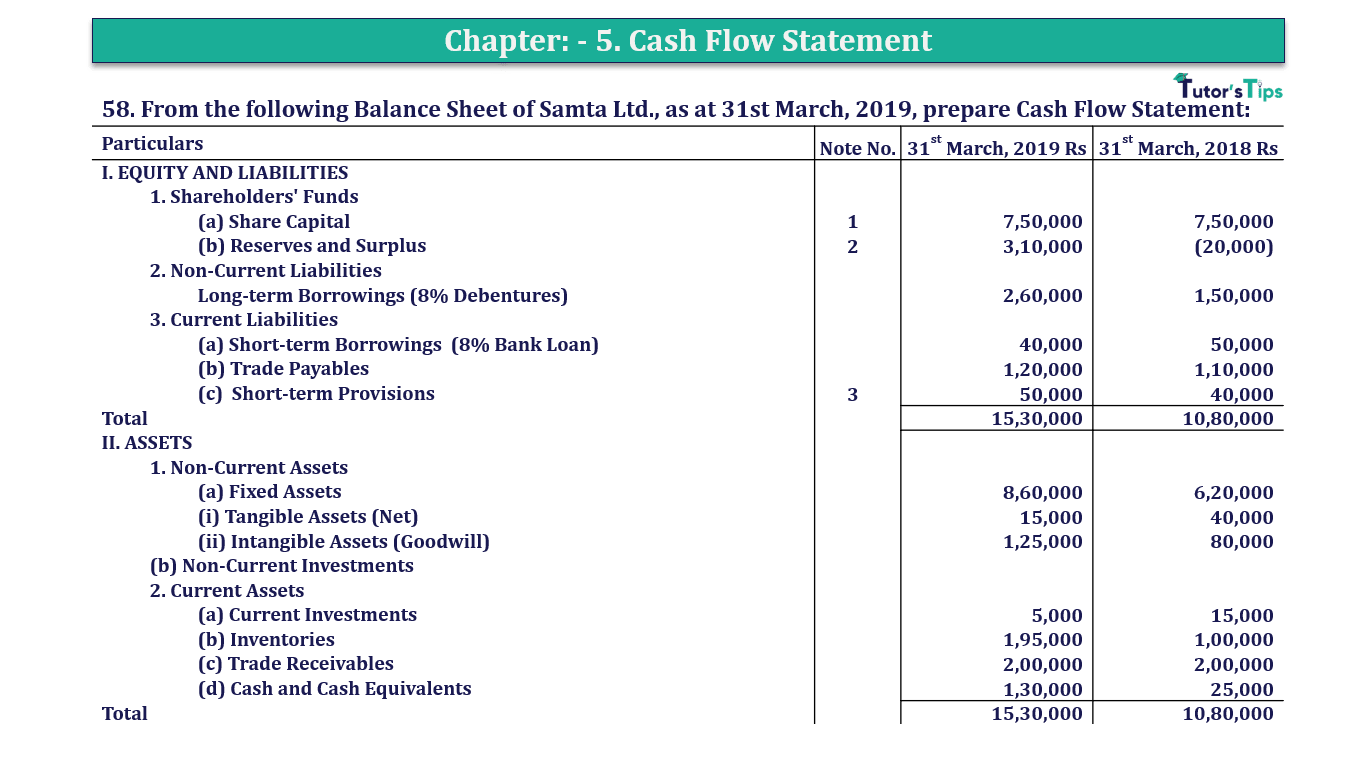Question 82 Chapter 4 of +2-B
Table of Contents
Interest Coverage Ratio
82. Compute Trade Receivables Turnover Ratio from the following:
| 31st March 2018 | 31st March 2019 | |
| Revenue from Operations (net Sales) | 8,00,000 | 7,00,000 |
| Debtors in the beginning of the year | 83,000 | 1,17,000 |
| Debtors at the end of year | 1,17,000 | 83,000 |
| Sales Return | 1,00,000 | 50,000 |
The solution of Question 82 Chapter 4 of +2-B: –
In 2017
| Average Debtors | = | Opening Debtors + Closing Debtors |
| 2 |
| Average Debtors | = | Rs. 83,000 + Rs. 1,17,000 |
| 2 | ||
| = | Rs. 1,00,000 |
| Trade Receivable Turnover Ratio | = | Net Sales |
| Average Debtors |
| Trade Receivable Turnover Ratio | = | Rs. 8,00,000 |
| 1,00,000 | ||
| = | 8 Times |
In 2018
| Average Debtors | = | Opening Debtors + Closing Debtors |
| 2 |
| Average Debtors | = | Rs. 1,17,000 + Rs. 83,000 |
| 2 | ||
| = | Rs. 1,00,000 |
Advertisement-X
| Trade Receivable Turnover Ratio | = | Net Sales |
| Average Debtors |
| Trade Receivable Turnover Ratio | = | Rs. 7,00,000 |
| 1,00,000 | ||
| = | 7 Times |
Balance Sheet: Meaning, Format & Examples
Thanks, Please Like and share with your friends
Comment if you have any question.
Also, Check out the solved question of previous Chapters: –
T.S. Grewal’s Double Entry Book Keeping +2 (Vol. I: Accounting for Not-for-Profit Organizations and Partnership Firms)
- Chapter No. 1 – Financial Statement of Not-For-Profit Organisations
- Chapter No. 2 – Accounting for Partnership Firms – Fundamentals
- Chapter No. 3 – Goodwill: Nature and Valuation
- Chapter No. 4 – Change in Profit-Sharing Ratio Among the Existing Partners
- Chapter No. 5 – Admission of a Partner
- Chapter No. 6 – Retirement/Death of a Partner
- Chapter No. 7 – Dissolution of a Partnership Firm
T.S. Grewal’s Double Entry Book Keeping (Vol. II: Accounting for Companies)
- Chapter No. 8 – Company Accounts – Accounting for Share Capital
- Chapter No. 9 – Company Accounts – Issue of Debentures
- Chapter No. 10 – Redemption of Debentures
T.S. Grewal’s Double Entry Book Keeping (Vol. II: Accounting for Companies)
- Chapter No. 1 – Financial Statements of a Company
- Chapter No. 2 – Financial Statement Analysis
- Chapter No. 3 – Tools of Financial Statement Analysis – Comparative Statements and Common- Size Statements
- Chapter No. 4 – Accounting Ratios
- Chapter No. 5 – Cash Flow Statement
Check out T.S. Grewal +2 Book 2020@ Official Website of Sultan Chand Publication








Leave a Reply